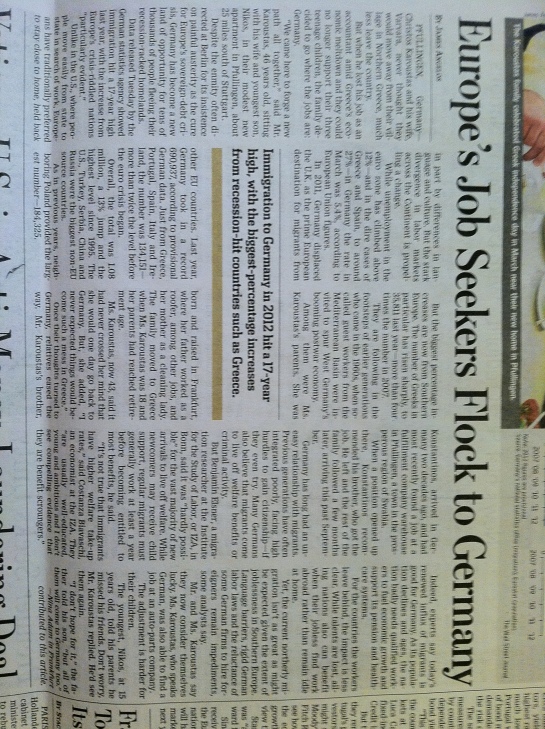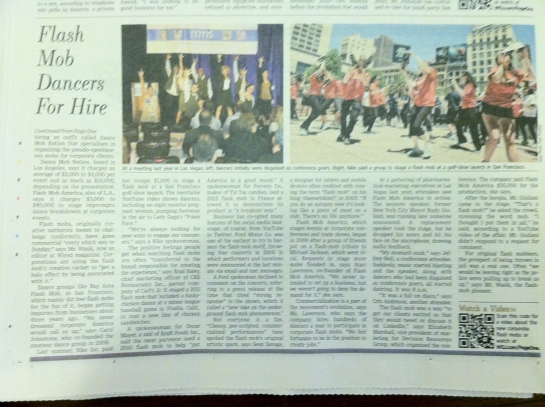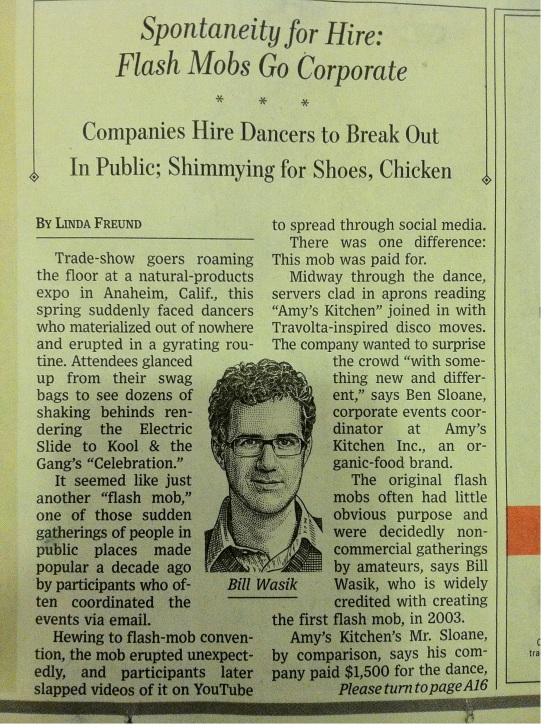Cynthia Tetreault
How is social activism developed through dance?
Abstract
The Eurozone Crisis has prompted various types of protest within the European community. One of the most widespread and innovative is the use of artistic mediums. Our group is interested in looking at different art forms and how they are embedded in social activism. We want to explore how the new trends in art were born and how they have influenced youth affected by the crisis. Specifically, we want to look into the issues of immigration and unemployment and how this has created tension within youth culture in the United States, Spain and Germany. We are interested in exploring how people are expressing their views through their art and the effect that it is having on others. We are not only interested in learning about the messages that artists are trying to send with their work, but also how it is being interpreted by others and how this is inspiring change within communities.This project will be conducted in the cities of Berlin, Leon, and Madrid, three cities rich with history, but also with modern movements catalyzed by the need for social change. Our methodology will consist of observations and interviews,which include visiting art galleries, watching (and possibly taking part in) street performances, viewing films and soccer games as well as conducting interviews. Overall, the questions our group will address are: How is performance embedded in social activism? How is social activism grounded in culture? What types of culture are used in social activism? How has art been used as a form of social activism for or by youth affected by the Eurozone crisis?
Background
Search for Harlem Shake on youtube and hundreds of thousands of videos show up. There is a harlem shake for everything now, from a grandma edition to a puppy edition and even multiple UW editions. But do people actually know what they are dancing for and what the meaning of this dance is, or are they just following a trend? The problem is that this worldwide phenomenon is not the real Harlem Shake, is it a mockery. How did this start? Did some corporate just see a video of the Harlem Shake and think, ‘Hey that looks ridiculous I bet people would love to try and copy this for fun?’ The first time I saw a video of the Harlem shake I didn’t get why people thought it was so funny, it just seemed odd and out of context. Every time I asked someone why people did this dance they could not come up with an answer. Recently, there have been many videos created that advertise the real Harlem Shake with interviews of “Harlemers” asking them what they think of the Harlem Shake:
http://www.youtube.com/watch?feature=player_embedded&v=IGH2HEgWppc (show from 50sec-1min)
On the opposite end of the spectrum,spanish flash mob dancers are trying to be very explicitly political. With Spain’s unemployment rate higher than twenty percent people are striking back, but not in a typical way. Dance is being used as a political form of expression and is increasing in popularity. I believe this is because you are more likely to reach a wider audience if you are able to communicate your message and entertain at the same time. If people don’t feel as threatened by you they are more likely to hear what you are saying. I aim to research the history of the flamenco, which is the dance most commonly used in flash mobs in Spain. I want to find out why it is this specific dance that is being used as well as who is performing these dances. Is it the youth or are there adults involved as well? I would also like to look into the youth culture meshed within the flash mobs by examining how people communicate to organize the demonstrations (social media). It would be interesting to find specifics on what results the flash mobs have caused both culturally and politically. Are people actually listening and making changes as a result? Analyzing any failed attempts at flash mobs would also be another side of the story that could deepen my understanding of this approach.
Caught in the middle of the spectrum,explicitly political being on one end and being obliviously political on the other, is Germany.Hip-hop has surfaced as a way for immigrants, specifically those of turkish decent, to express their frustrations with the racism in society. Hip-hop often represents the “thug life” which is embraced by many youth in Germany. After the fall of the Berlin wall and the rise in German nationalism, Turkish immigrants have sought a way to express their mixed turkish-german identities. It has been most difficult for me to narrow down my research in Germany because I know the least about Germany and have heard the least about them in the media. I know we have discussed various rap bands in class that have many members who are immigrants so they all rap in different languages and I would like to investigate more about this group. I have also learned that the harlem shake is very popular among German youth so I want to compare and contrast the extent which youth understand the history of this dance.
Questions
What types of culture are used in social activism and which specific cultural items? For example, why was the Flamenco used in flash mobs and not another dance, what is the history of this dance? What is the origin of the Harlem shake and what kind of a statement is it making in today’s popular culture? Who is associated with hip-hop in Germany and why? How is the harlem shake more or less political/intentional than the flash mobs?
Cultural Sensitivity
Although I have grown up in the United States I believe that I am not biased for the Harlem Shake because I have never taken part in one of these flash mobs or found them as entertaining as many others do. If anything I am biased against the Harlem Shake and am more likely to take the side of the true Harlem Shakers, writing off the popular version quickly without considering both sides of the story. I need to make sure that I consider the point of view of people who enjoy the harlem shake as a valid one.
Considering youth unemployment, it is difficult for me to relate because I am currently employed as a gymnastics coach and I have been since I was sixteen years old. However,in my Freshman year of college when I was searching for a new job I experienced how difficult it is to find a job because I had to go through a very lengthy and selective process of multiple interviews and applications. The act of searching and applying for jobs was a job in itself and was very time consuming. However, I was eventually able to find a position, unlike over 50% of youth in Spain.
Daily Schedule
I would like to interview people who are performing in the Flamenco flash mobs of Spain and possibly even participate myself.I could even take a Flamenco class or learn on my own from youtube videos. In Germany I want to attend many hip-hop and rap concerts or even just listen to a live band at a cafe or night club. I would like to interview band members as well and ask them what they are singing and why. I also want to ask youth in Germany what they think about the harlem shake and how much they know about the history of the dance. In particular I would like to take a poll to see how many people think that the mock harlem shake is racist and/or insulting and compare that to a similar poll I will take among the members of our study abroad group.
References
United states:
The story of the real harlem shake: http://www.youtube.com/watch?v=dKAjnYffoaE
Who invented the Harlem shake? http://www.independent.co.uk/arts-entertainment/theatre-dance/news/a-brief-history-of-the-harlem-shake-8518071.html
Harlem Reacts to ‘Harlem Shake” Videos: http://www.youtube.com/watch?feature=player_embedded&v=IGH2HEgWppc
http://www.youtube.com/watch?feature=player_detailpage&v=dkx__UYqEk4
Harlem Shake song: http://www.techdirt.com/articles/20130311/11092522281/artists-sampled-without-permission-harlem-shake-song-demand-to-get-paid.shtml
Spain:
History of Flamenco: http://gypsyrumor.com/blog/a-brief-history-of-flamenco/
http://www.classicalguitarmidi.com/history/flamenco.html
William Roy (UCLA)-Reds, Whites and Blues- folk music in social movements http://today.ucla.edu/portal/ut/american-folk-music-s-long-and-169800.aspx
Germany:
Rap, Hip-hop, Kreuzberg by Levent Soysal http://www.jstor.org/stable/4150467





